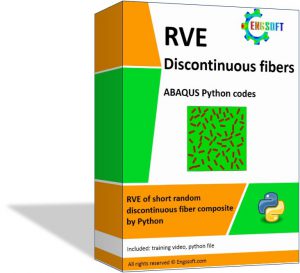Elastic and Elasto-Plastic UMAT in Abaqus
Download files: two UMAT files and related CAE files
Are you interested in getting started with the UMAT subroutine? Whether you’re a beginner or an expert in its usage, this page can provide valuable insights and assistance in understanding and utilizing UMAT effectively for both elastic and plastic materials.
UMAT, or User Material Subroutine, in Abaqus is a powerful tool that allows users to define custom material models tailored to their specific simulation needs. UMAT empowers users to implement complex material behaviors not readily available in standard material models. With UMAT, beginners can craft custom material behaviors by coding their constitutive equations, enabling simulations of diverse mechanical, and thermal phenomena. Through UMAT, users gain the flexibility to simulate a wide range of materials, from metals to polymers, and accurately capture nonlinear behaviors such as plasticity, damage, and creep.
On this page, you have the opportunity to download all the relevant CAE files and UMATs that accompany our tutorials and demonstrations. These files are invaluable resources, providing hands-on experience and facilitating your learning journey in finite element analysis and UMAT development. Simply click the download links provided to access these materials and enhance your understanding and proficiency in Abaqus and UMAT programming.
This page guides you through the step-by-step process of writing both elastic and plastic UMATs. Beginning with the simplest UMAT, which is the linear elastic UMAT, it’s essential to grasp its fundamentals. We recommend watching the provided video for a comprehensive understanding of linear elastic UMATs.
Moving forward, it’s crucial to learn how to run and test a UMAT effectively. In the next step, we demonstrate how to utilize a UMAT within the Abaqus environment. We encourage you to watch the accompanying video to learn the procedures for using a UMAT in the Abaqus environment.
On this page, you have the opportunity to download all the relevant CAE files and UMATs that accompany our tutorials and demonstrations.
Creating a plastic UMAT requires a solid understanding of plasticity principles, computational plasticity, and coding skills. In the following video, we’ve endeavored to simplify the complex plasticity equations to facilitate comprehension and implementation. We recommend watching the video to gain insights into simplifying plasticity equations.
Once you’ve mastered the plasticity equations, the next crucial step is learning how to translate them into code. The next tutorial covers this essential aspect, making it essential for anyone venturing into writing a plastic UMAT for the first time. By watching the video, you’ll gain invaluable knowledge on converting plasticity equations into code, empowering you to effectively implement your material models in Abaqus simulations.
After years of teaching, I’ve recognized that incorporating the Jacobian Matrix poses one of the most challenging hurdles for students when working with UMAT. To address this, we’ve developed a specialized video focused solely on understanding and implementing the Jacobian Matrix. This resource aims to provide clarity and demystify this complex aspect of UMAT, ensuring students have the necessary guidance to navigate through this crucial component with confidence.
Congratulations! With your mastery of plasticity, computational plasticity, and understanding of the Jacobian Matrix, you’re well-equipped to tackle the final piece of the puzzle: writing the complete line-by-line code for the plastic UMAT. Our comprehensive video covers every aspect of the plastic UMAT, providing you with the ultimate resource to bring your knowledge and skills together into a cohesive and effective implementation. Dive into the video and unlock the full potential of your expertise in UMAT development.
Description for files:
On this page, you have the opportunity to download all the relevant CAE files and UMATs that accompany our tutorials and demonstrations. These files are invaluable resources, providing hands-on experience and facilitating your learning journey in finite element analysis and UMAT development. Simply click the download links provided to access these materials and enhance your understanding and proficiency in Abaqus and UMAT programming.


